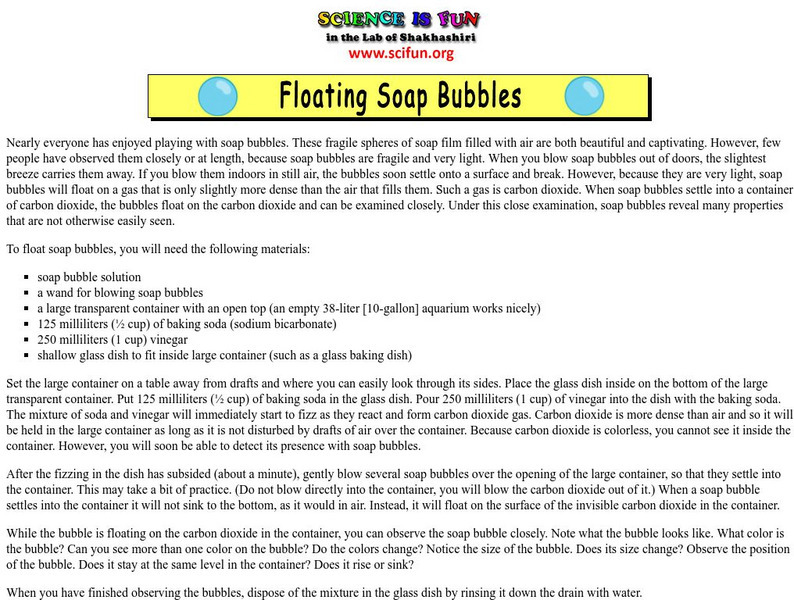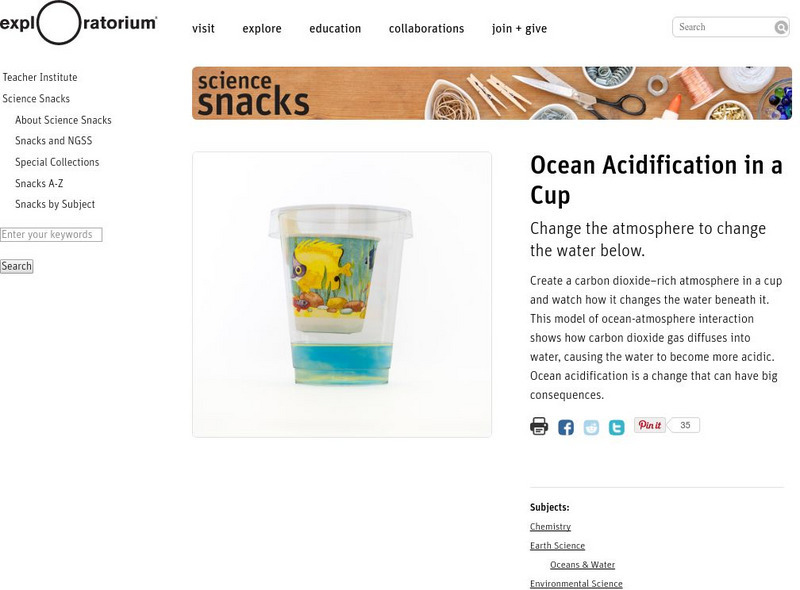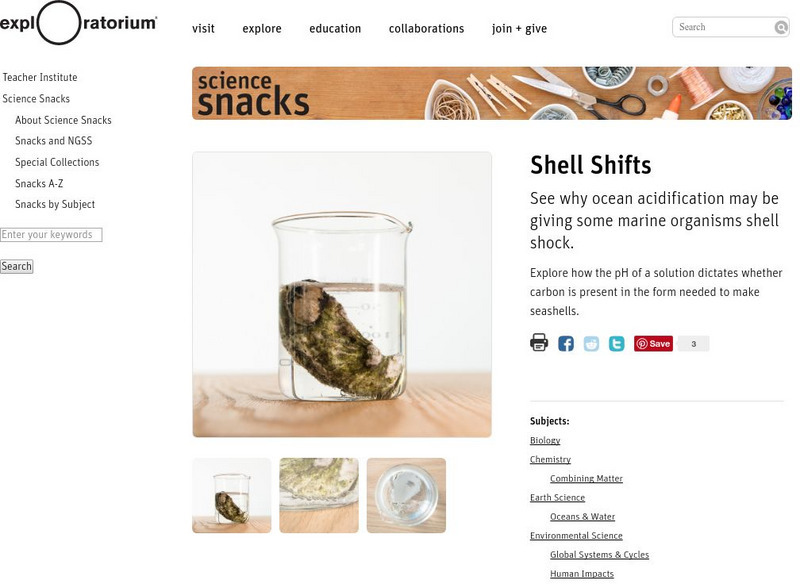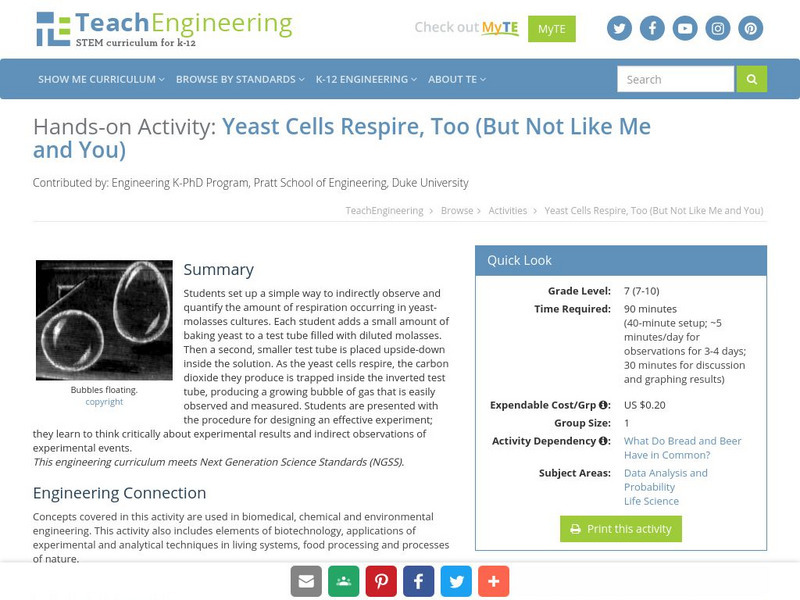Hi, what do you want to do?
Science is Fun
Science Is Fun: Floating Soap Bubbles
In this experiment you learn how to generate carbon dioxide inside a container, and float soap bubbles above the gas. Once the bubbles are suspended, it is possible to observe them closely, which is normally very difficult to do....
Exploratorium
Exploratorium: Science Snacks: Ocean Acidification in a Cup
In this activity, you can observe how ocean acidification can have big consequences. This activity has students creating a cup that has a carbon dioxide-rich atmosphere that allows them to watch how the water changes beneath the atmosphere.
Science Fun for Everyone
Science Fun: Dancing Hearts
Watch conversation hearts dance with this hands-on experiment. Links to video of the experiment.
Science Fun for Everyone
Science Fun: Orange Fizz
Science activity shows what happens when an orange or clementine is mixed with baking soda. Links to video of the experiment.
Exploratorium
Exploratorium: Science Snacks: Shell Shifts
Investigate the damage that ocean acidification does to the shells of sea creatures.
Science Fun for Everyone
Science Fun: Cool Off Volcanoes
Build your own volcano and make it erupt with this science experiment!
Science Fun for Everyone
Science Fun: Vinegar Pops
See what happens when you dip a popsicle made of vinegar into a plate of baking soda in this science experiment.
Bill Nye
Bill Nye: Pop a Rocket
Try this at-home science experiment to learn how to make a two-part rocket fuel system that safely explodes.
Science Fun for Everyone
Science Fun: Invisible Extinguisher
Science activity shows how a candle is extinguished invisibly,
Science Fun for Everyone
Science Fun: How to Make a Volcano
Watch Scientist Joe make a volcano using common household products in this video presentation.
TeachEngineering
Teach Engineering: Yeast Cells Respire, Too (But Not Like Me and You)
Students set up a simple way to indirectly observe and quantify the amount of respiration occurring in yeast-molasses cultures. Each student adds a small amount of baking yeast to a test tube filled with diluted molasses. A second,...
TeachEngineering
Teach Engineering: How to Make Yeast Cells Thrive
Students set up and run the experiments they designed in the lesson Population Growth in Yeasts, using simple yeast-molasses cultures in test tubes. Population growth is indicated by the amount of respiration occurring in the cultures,...
Treehut
Suzy's World: Blood
Use this site to find out why your body needs blood with this quick fact sheet. You can also try an experiment with your pulse.
University of Missouri
Umsl: Microbes in Action: Classroom Activities: Fungus I [Pdf]
A science experiment to observe the rate of carbon dioxide gas produced by yeast. Students will get a visual of the process of fermentation. Lesson plan gives a lab procedure, teacher instructions, points for discussion, and additional...










